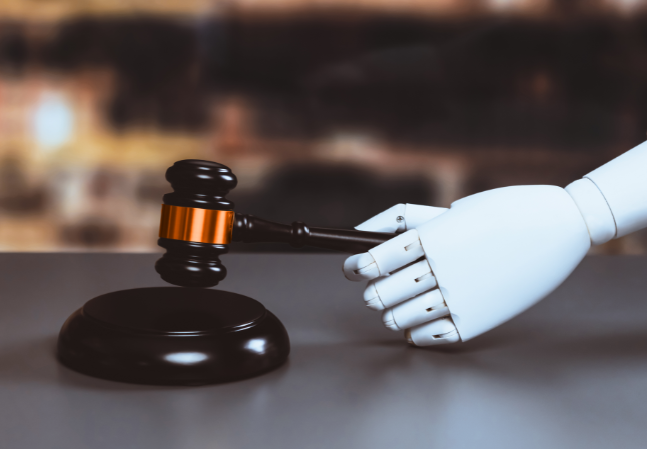- videocam On-Demand Webinar
- calendar_month May 1, 2024 @ 1:00 p.m. ET./10:00 a.m. PT
- signal_cellular_alt Intermediate
- card_travel Personal Injury and Med Mal
- schedule 90 minutes
Ensuring Prior Bad Acts Come Into Evidence in Personal Injury Cases: Strategies for Plaintiffs and Defendants
Welcome! Save 30% on all CLE, CPE, and Professional Skills webinars, plus 15% off any annual pass with code HOLIDAY25
About the Course
Introduction
This CLE course will guide personal injury lawyers on how to leverage too often overlooked in civil cases Federal Rule of Evidence 404(b) to get valuable evidence admitted and why the quest for such evidence can lead to other admissible evidence or influence settlement. The panel will discuss the rule and its exceptions; how to uncover prior bad acts or incidents; how to get that evidence admitted and best strategies for excluding it; and how to not overlook this rule in personal injury cases.
Description
Evidence of prior bad acts admitted under Federal Rule of Evidence 404(b) can be very close to the proverbial silver bullet for personal injury attorneys in many cases and devasting to the person and case against whom it is offered.
It is controversial and often litigated because it can be a gateway to the jury for otherwise inadmissible evidence. If a plaintiff is aware of such evidence, counsel can draft the complaint to ensure similar acts will come into evidence. The defendant can do the likewise in its answer. But counsel must be well versed in what is not implicated by FRE 404(b) and thus admissible in its own right.
Counsel must understand the proper procedures for getting 404(b) evidence admitted and for excluding it. Courts are well aware of attempts to introduce inadmissible evidence and may be quick to exclude evidence that only becomes relevant and probative through inferences that the party against whom it is admitted acted in conformity with whatever the evidence of the prior act says about their character.
Listen as this experienced panel explores how this underutilized rule can be a powerful tool in personal injury cases.
Presented By

Mr. Campbell is a partner in the firm’s Product Liability and Mass Tort practice. He has experience in all phases of litigation, including first-chairing jury and bench trials in state and federal courts and arguing appeals. He is co-author of the book Expert Witnesses: Products Liability Cases (West 2009), an in-depth guide to expert witness development in all types of product liability and mass tort matters, including pharmaceutical, toxic torts, automotive, industrial accidents and children's and consumer products.

Mr. Kiniry is engaged in a broad-based litigation practice focused on product liability, medical malpractice, internal investigations and regulatory compliance. He has first chair trial experience with automotive product liability litigation, particularly warranty litigation where he has appeared in nearly every court in the State of Maryland. Mr. Kiniry's practice is centered on the preparation, trial, and appeal of civil litigation cases, including conducting internal investigations in reconstructing and explicating the “company story” with respect to involvement with legacy products such as asbestos; responding to and conducting discovery in mass tort (asbestos) litigation; the representation of a major health care system and its practitioners in a variety of contexts; representation of major pharmaceutical manufacturers, as well as manufacturers and distributors of automobiles and heavy construction equipment.

Kumar focuses her practice in diverse areas of litigation, regulatory compliance and enforcement, and investigations and is a member of the firm’s Environmental Practice Group. She is developing a broad-based practice in complex commercial litigation with a particular focus on the defense of industrial companies in toxic tort and product liability actions. Ms. Kumar is currently involved in the defense of a multinational chemical company in multidistrict litigation involving PFAS. She is committed to pro bono work as a member of the Maryland State Bar Association’s Young Lawyers’ Section. She has also focused on issues related to estate-planning for low-income individuals.
-
This 90-minute webinar is eligible in most states for 1.5 CLE credits.
-
Live Online
On Demand
Date + Time
- event
Wednesday, May 1, 2024
- schedule
1:00 p.m. ET./10:00 a.m. PT
- What evidence FRE 404(b) covers
- What evidence is never implicated by FRE 404(b)
- Admissibility
- Proper evidentiary purpose
- Relevant
- Probative value vs. prejudice
- Proper limiting instruction
- Application in different types of cases
The panel will review these and other pressing issues:
- Has the definition of "bad acts" changed over time?
- What standard should be applied when reviewing Rule 404(b) proper purpose determinations?
- Do the rules governing the admissibility of character evidence apply to corporations or other entities?
- What does it mean that Rule 404(b) is a rule of inclusion rather than exclusion?
- What is "reverse" FRE 404(b) evidence?
- What objections can be expected?
Unlimited access to premium CLE courses:
- Annual access
- Available live and on-demand
- Best for attorneys and legal professionals
Unlimited access to premium CPE courses.:
- Annual access
- Available live and on-demand
- Best for CPAs and tax professionals
Unlimited access to premium CLE, CPE, Professional Skills and Practice-Ready courses.:
- Annual access
- Available live and on-demand
- Best for legal, accounting, and tax professionals
Unlimited access to Professional Skills and Practice-Ready courses:
- Annual access
- Available on-demand
- Best for new attorneys
Related Courses
Recommended Resources

Making Continuing Education Work for You, Anytime, Anywhere
- Learning & Development
- Career Advancement

Getting the Most Out of BARBRI Resources
- Learning & Development
- Business & Professional Skills
- Talent Development


